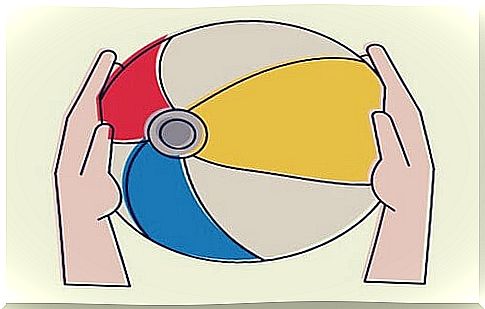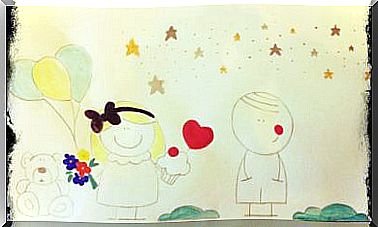A Ball On The Beach To Regulate Emotions

The metaphor of the ball on the beach is very useful for regulating negative emotions, especially anxiety. It is a visualization technique that requires the intervention of an important dimension, creativity. This is because each of us handles problems in a personal way, as the following exercise demonstrates.
To evaluate the importance of this tool in psychological practice, first of all we need to understand the meaning of the term “therapeutic metaphor”. It includes a series of constructions, stories or figures of speech in which the patient is invited to look for the relationship between an initial concept and an aspect of personal reality that is associated with it.
One of the best known therapeutic metaphors is that of quicksand. In this exercise, the goal is to come to understand that sometimes the more we try to tackle our problems, the deeper we sink. The solution in many cases is to stop and get in touch with what we are avoiding.
With this resource, the patient is forced to go through a series of psychological processes that will be of great help in therapy. First, he must understand the metaphor. At the same time, he must identify with and establish a correspondence between what is being explained to him and what he feels.
Lastly, and not least, it is necessary for the person to arrive, autonomously, at a strategy that can help him in a concrete way, starting from the tool offered by the psychologist. The latter’s task is always a facilitator; he will never have to solve the question posed by the exercise.

The metaphor of the ball on the beach
In order for the metaphor of the ball on the beach to give results and serve, visualization is used. As psychologists McCurry and Hayes (1992) explained in their research paper Clinical and experimental perspectives on metaphorical talk , creating mental images stimulates the subsequent recollection of the metaphor. In this way we can use it whenever we feel the need. Let’s see how the exercise takes place.
View the following situation:
You are on the beach. The day is calm, the sky is clear. Light fills every corner of this idyllic setting. However, you don’t feel happy. You are anxious, a large number of emotions gather within you that mix in a painful way: fear, shame, anger, sadness …
This whole emotional universe is enclosed in a ball, the symbol of what exists within you, of what you feel, of what disturbs and anguishes you. The sensation is so painful that your only desire is to make it go away. But how? You approach the water’s edge and immerse the balloon in the water.
Visualize this image in detail: imagine yourself in the effort to immerse the ball. You don’t want anyone to look at you, you just want the anxiety to go away forever. May the waves of the sea carry her away. Every time you try to get the balloon to the bottom, it re-emerges. And, even worse, the more force you press, the more energy it will have in going back up, even hitting you, making you lose your balance.
The metaphor of the ball on the beach: how would you solve it?
The next step requires extra effort. As we said at the beginning, this tool requires some creativity. To find a good solution, consider the following elements:
The ball symbolizes emotions: anxiety, fear, anger, shame, dimensions that you may have been hiding for some time. But now you know what result is obtained by stifling emotions: everything gets worse and gets out of hand. How can we solve the problem and turn the strategy in our favor? Let’s see what is the most common (and useful) answer to the problem.

The most appropriate strategy is to desist from trying to submerge the ball. We must stop wasting energy, fighting what cannot or is not healthy to fight. Hiding emotions, making them sink into the water is useless. Just as it is not adequate to accumulate discomfort.
We can then take the ball and sit quietly on the shore. The target? Deflate the balloon. We have to let out all the air it contains. Once this is done, we will feel much better, more relieved. However, it is necessary to know where the valve is located, the button that holds the air.
The metaphor of the ball on the beach is used to find the personal strategy to release anxiety, fear or shame. We must find that “mechanism” that allows us to understand why we feel these emotions, and access the path that frees us from discomfort.
Reaching the goal is not easy, but this tool reminds us that the emotional sphere cannot be submerged or hidden. The world of emotions must be accepted, understood and liberated.









